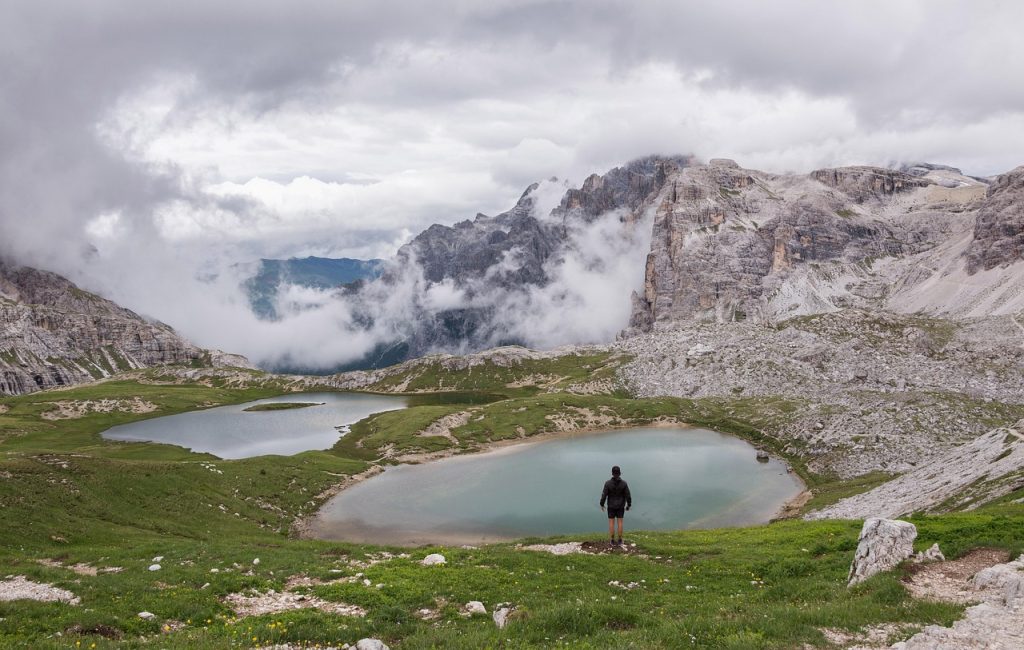When the updraft lifts the wing, time loses meaning amid the folds of snow peaks and lakes—only the dialogue between wind and freedom remains eternal.
🌬️ I. Thermal Currents: Nature’s Invisible Stairway
Pokhara, Nepal, is one of the world’s top three paragliding destinations, thanks to the unique convergence of radiation heat from Phewa Lake and glacial cold air from the Annapurna range. Sarangkot Hill (1,592m above sea level) serves as the core launch point, where the southeast slope experiences a daily temperature differential of up to 25°C after 10:00 AM, generating a “thermal pump” with a vertical ascent rate of 300 meters per hour. Pilots track the circling patterns of black kites (with circles ≤50m in diameter indicating the core updraft zone) to lock onto spiral columns of warm air measuring 10-30 meters wide. Data from 2023 shows that during the peak flow period from September to October, wings can climb to an altitude of 6,300 meters, offering a breathtaking view of Machhapuchhre’s eastern ice cascade pouring like a silver waterfall through the clouds.
⚡️ II. The Technical Code of a 6-Hour Flight
Equipment Revolution:
Ultra-lightweight canopies (EN-D class turbulence-resistant wings weighing only 2.7kg) use nano-grade polyester fiber, increasing strength by 300% compared to traditional materials. Cold-resistant harnesses integrate carbon fiber frames and aviation-grade aluminum hooks, remaining flexible at -30°C. By 2024, Nepali pilots widely wear mini blood oxygen monitoring bracelets that trigger vibration alerts when blood oxygen saturation drops below 70% at 6,000 meters.
Energy Management:
A “zigzag thermal corridor” tactic is employed along Annapurna’s southern slopes: circling at 5m/s in updraft zones (gaining 200 meters per circle) and diving at 70km/h through sink zones. Every kilometer of altitude loss can be recovered in just 3 minutes, achieving net energy gain.
Survival Challenges:
At 8,000 meters, UV intensity exceeds plains levels by 12 times, requiring pilots to wear chrome-plated snow goggles to prevent corneal burns. Sudden wind shear causes canopy collapse in up to 17% of cases; pulling the “B-group stabilizer lines” can restore wing shape within 0.8 seconds.
🏔️ III. A History of Life-and-Death Flights Over Everest
- 1988: French explorer Jean-Marc Boivin made the first solo paragliding descent from Everest’s summit, setting a world record by descending 3,000 meters vertically in 11 minutes.
- 2001: Bertrand and Claire executed a tandem flight over the Rongbuk Glacier using a custom 5.3kg tandem wing, pioneering the “climb-and-fly” adventure model.
- 2022: Pierre Carter’s team obtained Nepal’s first official flight permit for a solo glide from the South Col, using the Ozone Enzo 3 wing to improve lift efficiency by 40%.
- 2024: Nepal’s National Flight Team completed a motorless round trip from Pokhara to Annapurna Base Camp, leveraging “glacial wind tunnels” for 6 hours of sustained flight.
Untold Tragedy: In 1998, Russian pilot Elvira Nasonova crashed into the Khumbu Glacier during a test flight, surviving 72 hours by melting snow before rescue—this incident catalyzed Nepal’s High-Altitude Flight Safety Act.
💡 IV. Pokhara: From Pilgrimage Site to Flight Sanctuary
Democratizing Flight:
Since 2012, retired European pilots established training camps along Phewa Lake, reducing entry costs to one-fifth of those in France. Today, Pokhara hosts 37 licensed flight companies, serving over 120,000 tourists annually; a 30-minute experiential flight with photography costs just 500 CNY.
Modernizing Ritual:
The “wait for the wind” ceremony has evolved into a meteorological big-data system—tethered helium balloons equipped with sensors relay real-time wind speed gradients from 200-3,000 meters. The lakeside Shakti Temple, featured in the film Wait for the Wind, now serves as a spiritual coordinates for pilots.
Ecological Flight Protocols:
The 2023 “Traceless Soaring” initiative prohibits flights within 500 meters of rare bird habitats (e.g., the Rufous-headed Laughingthrush breeding grounds). Pilots must use biodegradable powder markers instead of traditional plastic streamers.
🧭 V. A Practical Guide to 6-Hour Flights: From Novice to Peak
Golden Window:
Launch between 9:00-11:00 AM to capitalize on initial ground heat radiation; reach the Annapurna glacier zone by 14:00 to capture compensatory updrafts triggered by sinking cold air. Beware of Himalayan “mammatus clouds”—strong turbulence follows within 15 minutes of their appearance. In April 2024, a pilot chasing such clouds experienced wing icing and stalled, crashing onto a 3,900-meter moraine.
Life Support Systems:
- Heated gloves: Maintain hand blood circulation for 4 hours at -25°C
- Pressurized oxygen masks: Deliver 1.5L/min at 8,000m, keeping blood oxygen saturation ≥85%
- High-glucose emergency gel: Provide 500 calories in 30 seconds; mandatory intake when blood glucose <3.9mmol/L
Mental Endurance Training:
Practice “blind circling” at Tibet’s Yamdrok Lake (4,400m)—maintain wing balance blindfolded using airflow tactile feedback to develop muscle memory for vertical wind shear. Veteran Nepali pilots share a secret: chewing spicy betel leaves stimulates adrenaline to combat high-altitude fatigue.
🌄 Conclusion: The Philosophy of Transcending Dimensions
“Six hours” represents not only a gravitational contest between humans and the Himalayas but also the ultimate practice of existentialism. When Jean-Marc Boivin leaped into the void from Everest, he proved with his body that “flying is a poetic rebellion against gravity”; today, the paragliders of Pokhara continue writing this Eastern Zen narrative in the updrafts of Annapurna: “Freedom is mastering balance amid infinite fall.”
Essential Resources:
Real-time thermal updates: Pokhara Paragliding Network
Must-read: Thermal Flight in the Himalayas (Nepal Mountaineering Association, 2023)

Leave a Reply